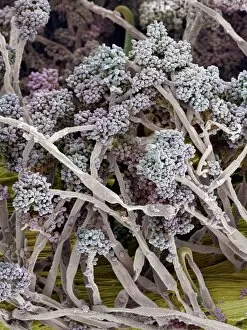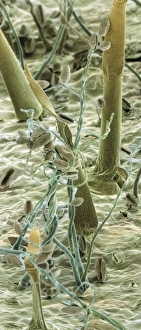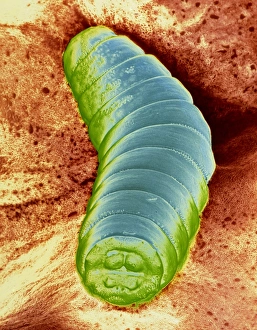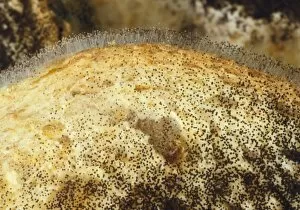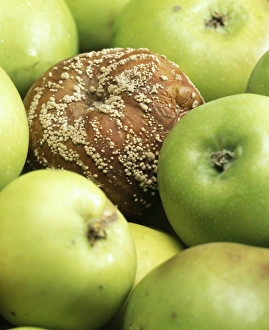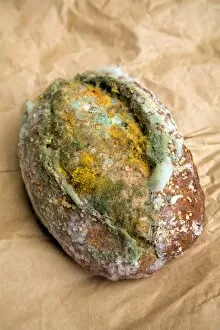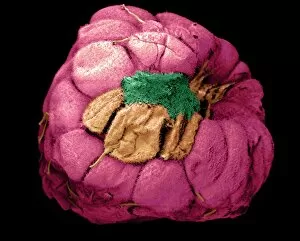Food Spoilage Collection
Food spoilage is a persistent problem that affects both crops and processed products
All Professionally Made to Order for Quick Shipping
Food spoilage is a persistent problem that affects both crops and processed products. The presence of mouldy crops, as seen under the scanning electron microscope (SEM), highlights the detrimental effects of fungal contamination. Potato blight, evident on leaves and through SEM images, showcases the destructive impact of this disease on one of our staple foods. Microorganisms like Acetobacter bacteria can also contribute to food spoilage, as revealed by SEM imagery. These bacteria can cause fermentation or souring in various food products if left unchecked. Even maggots, depicted in false-color SEM images feasting on raw beef, play a role in accelerating food decay. To combat these issues, researchers are constantly developing innovative solutions such as DNA NutriChip for food testing. This technology allows for efficient detection and analysis of potential contaminants or pathogens present in our meals. Mould growth is another common signifier of food spoilage; bread mould and Penicillium fungus are often responsible for rendering our loaves unappetizing. In just five days' time, bread can become covered with an unsightly layer of mould. Fruits are not exempt from spoiling either; rotting apples serve as a reminder that even seemingly fresh produce has a limited shelf life. Mouldy apples further emphasize the importance of proper storage conditions to prevent wastage. Understanding different aspects related to food spoilage helps us appreciate the significance of preserving our perishable goods effectively. From microscopic organisms causing decay to visible signs like mould growth or rotting fruits – it's crucial to prioritize good practices when handling and storing our precious sustenance.

